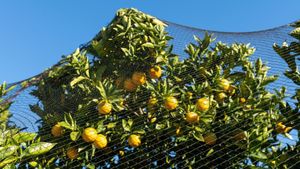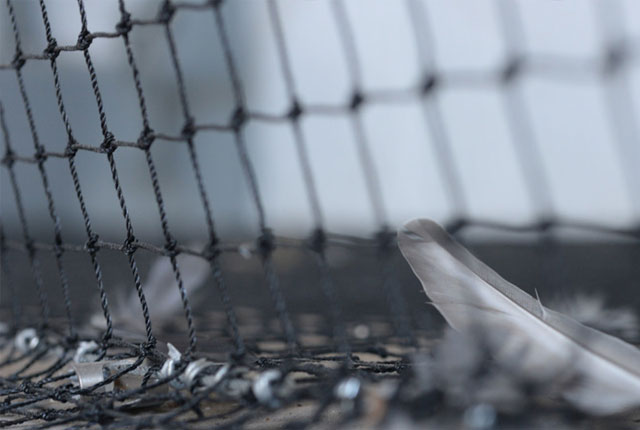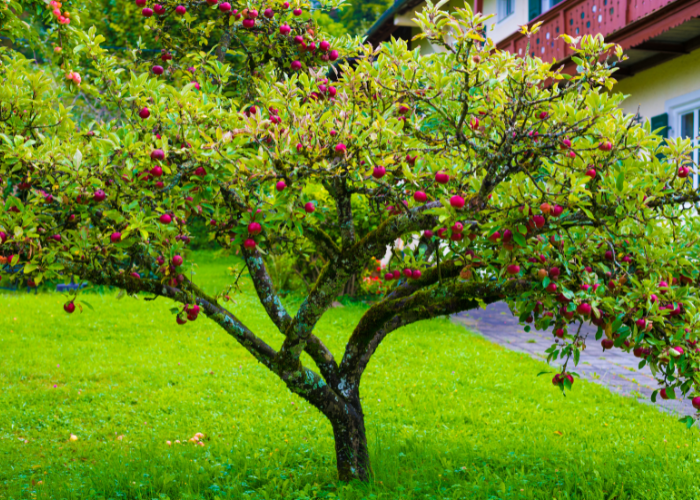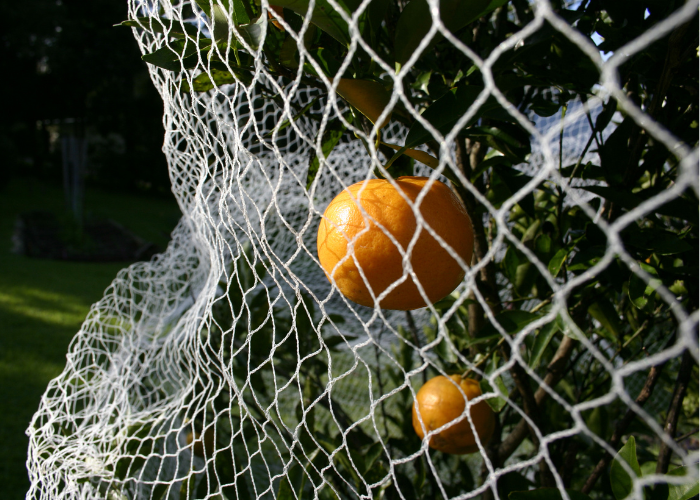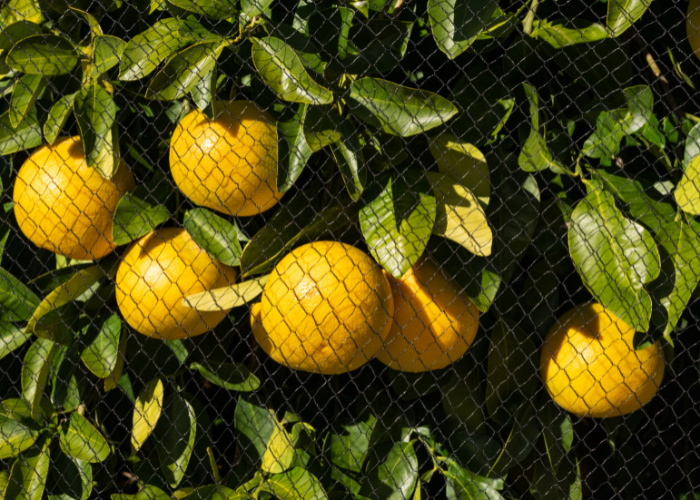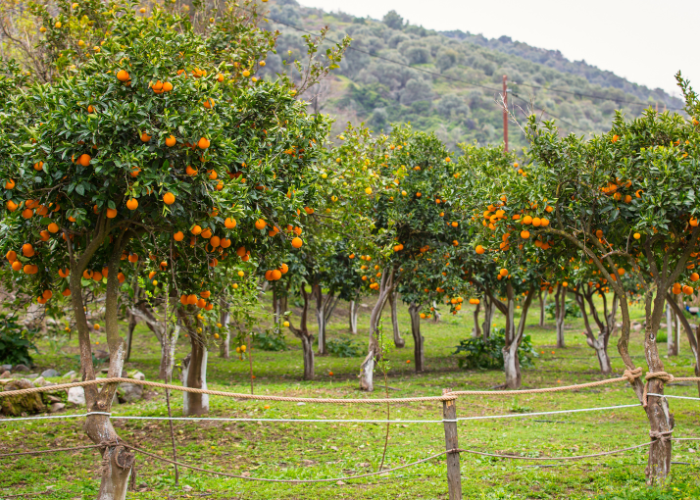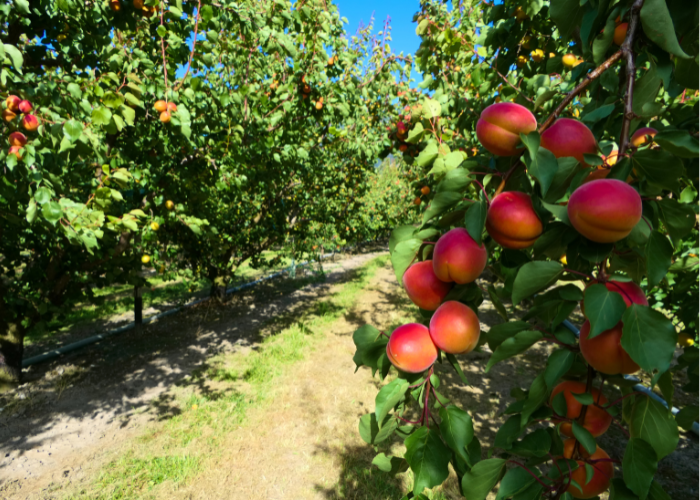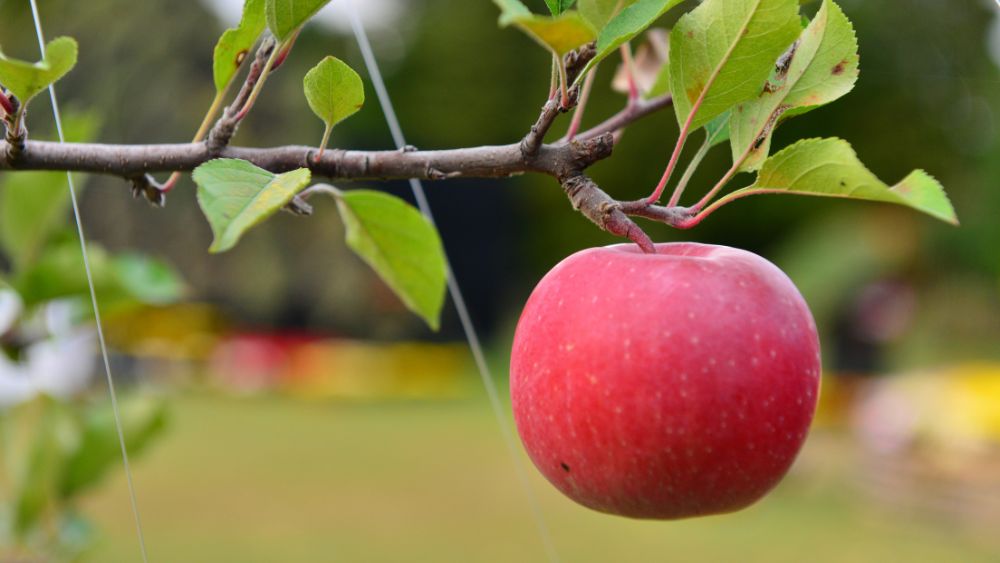Your Complete Guide on How to Bird Net Fruit Trees
Fruit trees are some of the most rewarding plants to have in your garden – but they do often attract unwanted attention! Knowing how to bird net your fruit trees will make sure that no feathered fiends can get in and ruin your harvest.
If grown correctly and taken care of, fruit trees will produce an abundance of delicious, fresh fruit.
However, this also means that they can be a prime target for birds looking for a quick and easy meal. Without proper protection, your fruit trees may become stripped bare by these hungry creatures.
Luckily, bird netting is a brilliant solution. It’s an effective and humane way to keep birds away from your fruit trees.
In this guide, we'll take you through the steps of how to bird net your fruit trees so you can enjoy a bountiful harvest.
In this guide:
Before Netting Your Fruit Trees
How to Bird Net Fruit Trees Correctly
What Are the Advantages of Using Fruit Tree Netting?
When to Replace Your Tree Netting
Protect Your Fruit Trees With Huck Nets
Before Netting Your Fruit Trees
If you've never netted a fruit tree before, you're probably feeling overwhelmed, but fear not! With the right tools and a little bit of know-how, you'll be able to net your trees like a pro in no time.
Choose the Best Netting Material
Selecting the optimal netting material for fruit trees is a crucial decision that hinges on several factors, including
- the type of fruit trees you have
- the pests you aim to thwart
- the coverage you need
Knotless nets are one of the best choices for anti-bird protection, as they’re stronger than knotted nets and can withstand repeated pecking from birds.
They’re also lightweight, easy to handle, and perfect for covering large areas, as well as sturdy trees like apple or pear trees.
Materials can vary depending on where you purchase your netting, but we use a high-quality 20mm polypropylene mesh that’s UV-stabilised and high-tenacity.
It’s proven to be extremely effective in keeping birds at bay while allowing enough sunlight and rain to reach the trees, which is important for their growth and health.
Micromesh or ultra-fine netting can be particularly effective if you’re struggling with small insects, such as aphids or fruit flies, as the holes are too small for them to pass through.
Choose the Correct Fruit Net Size
To get the most out of your fruit netting, you need to make sure it's the right size for the area or plants you need to cover.
If your netting is too small, it won't fully cover the tree, leaving gaps for birds to sneak in. If it's too big, it will be difficult to handle and may weigh down branches or cause damage.
Measure the height and width of your fruit trees and add a few extra feet to each measurement to ensure full coverage.
We also recommend accounting for a few extra cm in your measurements to allow for fitting and securing the net in place.
At Huck Nets, we offer our fruit tree netting in bespoke sizes, made to order to perfectly cover and protect your trees from pests. You can request the width and length of your net depending on the size of the tree, making sure it fits snugly and securely.
Request Your Bespoke Fruit Tree Netting
Make Sure You Net the Fruit Trees at the Right Time
Timing is critical when it comes to netting fruit trees; doing it at the right moment can mean the difference between a fruitful harvest and a disappointing one.
Netting too early could restrict the natural growth of the tree or impede pollination, resulting in lower fruit yield.
Conversely, netting too late allows birds and pests ample opportunity to damage or consume the developing fruit.
The best time to net fruit trees is after the blossoms have been pollinated and the fruit has begun to form, usually when they are about the size of a pea.
This ensures that insect pollinators, like bees, can access the blossoms while protecting the young fruit from pests as it matures.
How to Bird Net Fruit Trees Correctly in 5 Steps
Once you’ve got the right fruit tree net, you can get started on properly installing it.
It’s important to get this right, as incorrect installation can lead to tears in the net and allow pests to wiggle through. You might also risk damaging your fruit tree if the net is too tight, which can cause branches to break under the weight of the fruit.
To ensure you’re netting your fruit trees correctly, follow our steps below:
Step 1) Roll Your Netting Out
Rolling your netting out is a crucial first step in applying netting to your fruit trees without any gaps.
Laying the netting flat on the ground allows you to remove any kinks and assess its size to make sure it adequately covers the tree with enough excess to secure it.
Step 2) Cut the Netting (if Needed)
If you've opted for a bulk roll of netting to cover multiple trees, you're going to have to cut it to size before you put it over your plants.
As a general rule, you need to have enough netting to cover the entirety of the tree and then some excess netting to adequately secure it to the ground.
Without a few cm of excess on each side, you run the risk of gaps around the edges, which can allow birds and other pests access to your precious fruit crops.
Of course, if you’ve used our made-to-order netting option, you shouldn’t need to cut the netting as it will already be the ideal size.
Step 3) Drape the Net Over the Tree
When you've prepped your netting, it's time to drape it over the tree. Just one person can do this, but if you have taller trees, it's easier with two people.
It's important to take the time to check the netting is sitting square on the tree, with enough excess on each side to securely fix it to the ground.
It’s important to ensure that the netting doesn’t get caught up in any of the branches or the tree’s fruit. Also, make sure the net is pulled taught enough to prevent any gaps for pests from entering, but not too tight that it damages the tree or its fruit.
Step 4) Secure the Netting to the Ground With Metal Pegs
Once in place, secure the netting to the ground with strong metal pegs. We recommend stainless steel pegs as they’ll last longer and won’t rust. These pegs should be driven into the ground at the bottom, ensuring a complete seal.
If your tree is positioned near a fence or wall, use additional cable ties, screws, or bolts to secure the net to the structure for added stability.
Step 5) Look for Any Gaps & Adjust if Needed
With your netting in place, it's time to take a step back and check for any gaps. If you find any, adjust the netting to fix them so the feathered fiends can't access your fruit.
We'd also recommend checking the positioning of your netting every couple of weeks to make sure it hasn't shifted too much with the growth of your trees.
Make sure to check your nets after adverse weather, too, for damage and shifting.
Regularly Check Your Netting
It's essential to perform regular checks on your tree netting to identify and rectify any issues promptly.
Neglecting to inspect the netting can lead to several problems, including tears that can allow pests to infiltrate and damage the fruit.
Regular maintenance ensures that the netting continues to offer effective protection throughout the fruiting season, and it helps prolong the lifespan of the netting material. This practice not only protects your harvest but also conserves the surrounding wildlife by preventing injuries to birds and beneficial insects.
What Are the Advantages of Using Fruit Tree Netting?
Using fruit tree netting presents multiple advantages, chief among them being the significant reduction of crop loss due to animal and insect-related damage.
It provides a physical barrier that deters pests, ensuring that fruits develop properly and harvests remain bountiful.
Also, netting can offer protection against harsh weather conditions, such as hail or intense sun, that can adversely affect fruit quality.
You may want to consider setting up extra protection in case your area is prone to these types of natural hazards, like shade or windbreak netting.
The Benefits of Bird Nets for Fruit Trees
When to Replace Your Tree Netting
Typically, you should inspect your netting at the end of each fruiting season, looking for signs of wear and tear, such as holes, fraying, or weakened fibres.
If these signs are pervasive, it's time to consider getting new netting.
It's also important to replace the netting if you notice it has become stretched out or misshapen, as this can affect its functionality and the level of protection it provides.
With Huck Nets' tree netting, you can expect a robust and enduring material that lasts multiple fruiting seasons, reducing the need for frequent replacements and ensuring your investment is cost-effective over the long term.
Summary: Bird Netting Your Fruit Trees
Once you’ve secured your netting to your fruit tree, your plant will be safeguarded against the beaks and claws of birds and the appetites of pesky animals.
Make sure you secure the netting following our recommended steps for the most effective protection – most importantly, ensuring that there are no gaps or holes for critters to sneak in through.
Protect Your Fruit Trees With Huck Nets
But it’s not just the way you net your fruit tree. The netting you use is just as important, if not more so, in providing durable and reliable protection.
At Huck Nets, we offer a range of bird netting options for both home and commercial use.
Our knotless mesh nets are lightweight yet strong, making them easy to handle while also ensuring they can withstand the elements and protect your crops season after season.
Our made-to-order service means you can get the perfect size to cover your fruit tree, ensuring a snug and secure fit. Plus, our nets are UV-stabilised for long-lasting protection against the sun’s harsh rays.
Shop our plant bird netting online today or give us a call!
FAQs
Protecting fruit trees from squirrels involves using exclusion methods such as netting or metal collars around the trunks, applying taste deterrents, providing alternative food sources, and trimming tree branches away from structures to prevent access. When used conscientiously, fruit netting is safe for birds. The key is to ensure the netting is well-fitted and secured to the ground. Choose a mesh size of 20mm or less. The lifespan of tree nets varies depending on material quality and environmental conditions but typically last years. It's essential to examine your nets annually for any degradation and replace them when wear and tear are evident to ensure continued protection of your fruit trees. Netting your fruit bushes should be timed to coincide with the early stages of fruit development immediately after pollination has occurred. This period is typically in late spring to early summer, depending on the specific type of fruit bush and the climate in your area. This timing ensures protection from pests while allowing optimal growth and fruit maturation. Plum trees do benefit from netting, particularly in shielding the development fruit from birds and squirrels. Netting helps ensure a healthier, more abundant harvest by preventing pests from eating or damaging the fruit. It's a crucial step if you're aiming to maximise yield.How Do You Protect Fruit Trees From Squirrels?
Is Fruit Netting Safe for Birds?
How Long Do Tree Nets Last?
When Should I Net My Fruit Bushes?
Do Plum Trees Need Netting?

